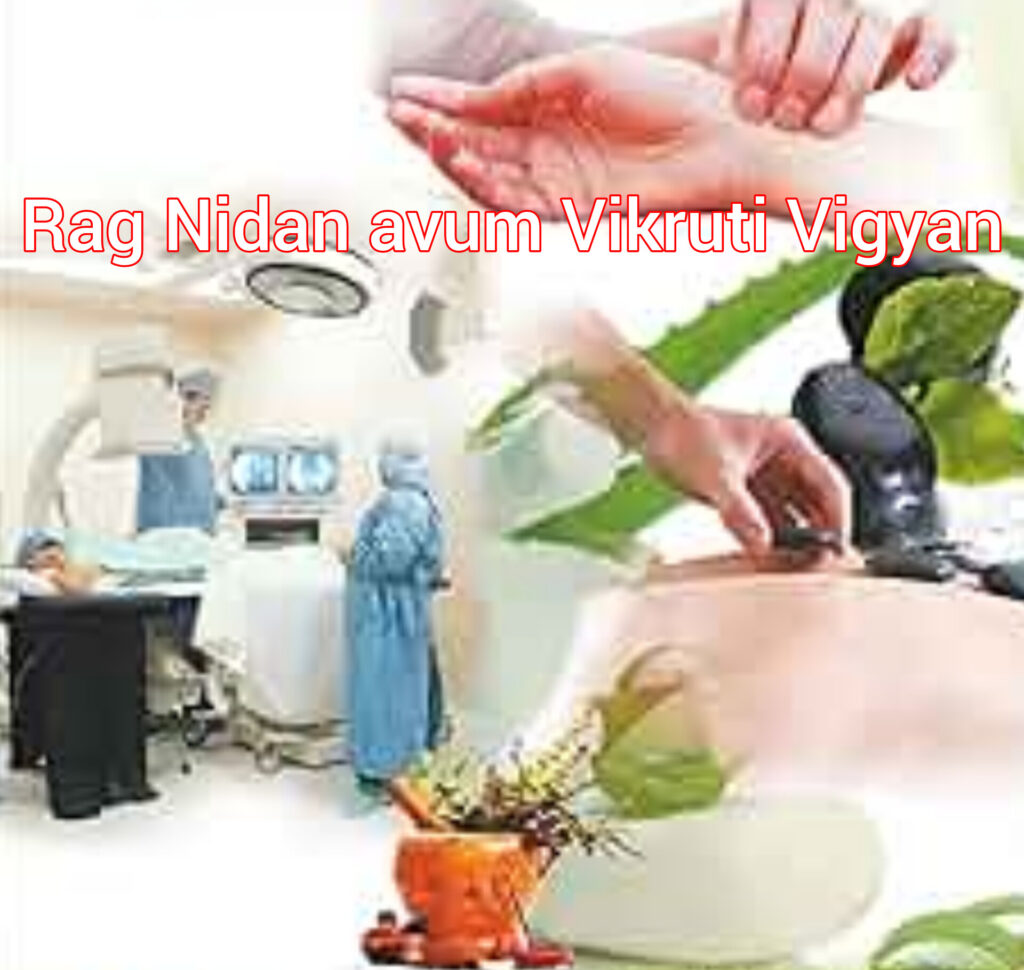
Rog Nidan Avum Vikriti Vigyan (रोग निदान एवं विकृति विज्ञान) is a crucial branch of Ayurveda that deals with the diagnosis of diseases (Rog Nidan) and the study of pathological changes (Vikriti Vigyan) in the body. It combines traditional Ayurvedic diagnostic methods with modern investigative techniques to understand disease processes.
Key Aspects of Rog Nidan Avum Vikriti Vigyan:
- Diagnostic Methods (Nidan):
- Trividha Pariksha (Threefold Examination):
- Darshan (Inspection) – Observing physical signs like complexion, swelling, etc.
- Sparshan (Palpation) – Feeling pulse (Nadi Pariksha), temperature, tenderness.
- Prashna (Questioning) – Taking patient history (Rogi Pariksha).
- Ashtavidha Pariksha (Eightfold Examination):
Includes Nadi (pulse), Mootra (urine), Mala (stool), Jihva (tongue), Shabda (voice), Sparsha (touch), Druk (eyes), and Akriti (general appearance).
- Vikriti Vigyan (Pathology):
- Studies the dosha imbalance (Vata, Pitta, Kapha) and dushya vitiation (dhatus, malas).
- Examines disease progression through six stages (Shad Kriyakala):
- Sanchaya (accumulation)
- Prakopa (aggravation)
- Prasara (spread)
- Sthana Samshraya (localization)
- Vyaktavastha (manifestation)
- Bhedavastha (complications)
- Modern Investigations:
- Integrates laboratory tests (blood, urine, imaging) with Ayurvedic diagnosis for better accuracy.
- Helps in understanding diseases like diabetes (Madhumeha), arthritis (Amavata), liver disorders (Yakrit Vikara), etc.
Importance in Ayurveda:
- Essential for accurate disease identification (Vyadhi Nidan) and treatment planning (Chikitsa).
- Helps in preventive medicine (Swasthavritta) by detecting imbalances early.
- Bridges traditional and modern medicine for holistic patient care.
This subject is a vital part of Ayurvedic education (BAMS curriculum) and clinical practice. Would you like details on specific diagnostic techniques or diseases?
